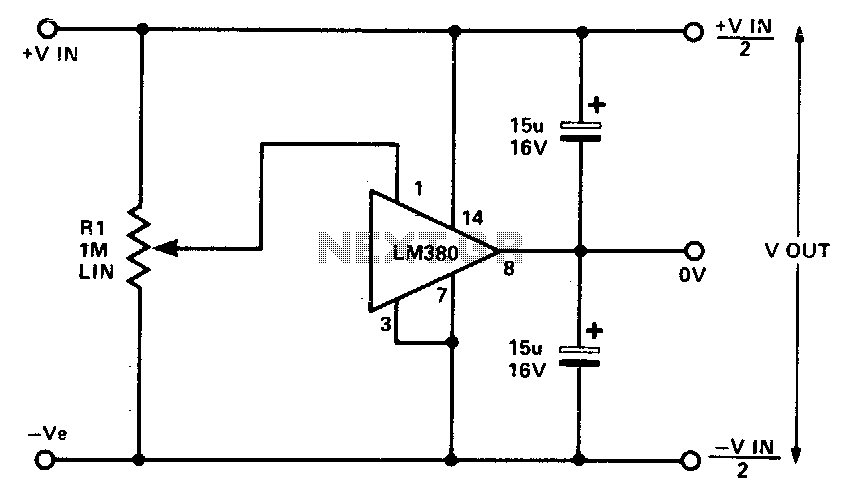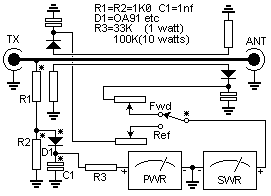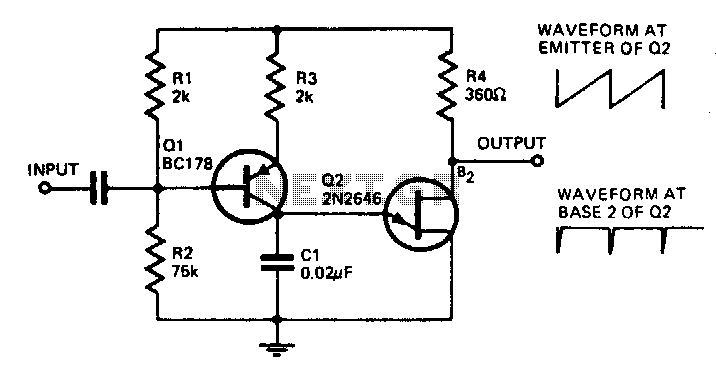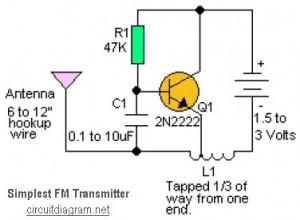
Simple Pre-Regulator
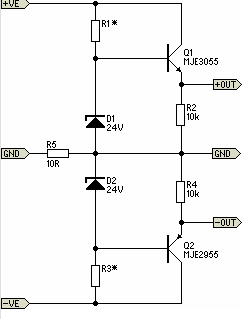
There will be many occasions when it is beneficial to utilize the P05 supply module sourced from a higher voltage supply. For instance, this could be advantageous when integrating balanced inputs.
The P05 supply module is designed to facilitate the conversion of a higher voltage input to a stable lower voltage output, which is essential for various electronic applications. This module typically operates within a specified voltage range and can efficiently manage power distribution to connected components.
In applications requiring balanced inputs, the P05 supply module can be employed to power operational amplifiers or other audio processing circuits that necessitate a dual-polarity power supply. For example, when interfacing with microphones or audio sources that output differential signals, the P05 module can provide the necessary voltage levels to ensure optimal performance and signal integrity.
The schematic for integrating the P05 supply module with a higher voltage source would include the following key components:
1. **Higher Voltage Source**: This could be a battery or a regulated power supply that provides the necessary input voltage to the P05 module.
2. **P05 Supply Module**: This module will have input terminals connected to the higher voltage source and output terminals that provide the regulated lower voltage. It is crucial to ensure that the input voltage does not exceed the maximum rating of the P05 module.
3. **Decoupling Capacitors**: Placed near the output of the P05 module, these capacitors help to filter out noise and provide stable voltage to the load.
4. **Load Connections**: The output terminals of the P05 module will connect to the load, which may include operational amplifiers or other circuitry requiring balanced inputs.
5. **Protection Components**: Diodes or fuses may be included in the circuit to protect against over-voltage or short-circuit conditions.
The design should also consider thermal management, as the P05 module may generate heat during operation. Adequate spacing, heat sinks, or active cooling methods may be necessary depending on the load current and duty cycle of the application.
In summary, the P05 supply module is a versatile component that can effectively convert higher voltage sources into stable lower voltages, making it suitable for applications involving balanced inputs and other sensitive electronic circuits. Proper schematic design and component selection are essential to ensure reliable operation and performance.There will be many times where it is desirable to use the P05 supply module from a higher voltage source. For example, if you want to add balanced inputs.. 🔗 External reference
The P05 supply module is designed to facilitate the conversion of a higher voltage input to a stable lower voltage output, which is essential for various electronic applications. This module typically operates within a specified voltage range and can efficiently manage power distribution to connected components.
In applications requiring balanced inputs, the P05 supply module can be employed to power operational amplifiers or other audio processing circuits that necessitate a dual-polarity power supply. For example, when interfacing with microphones or audio sources that output differential signals, the P05 module can provide the necessary voltage levels to ensure optimal performance and signal integrity.
The schematic for integrating the P05 supply module with a higher voltage source would include the following key components:
1. **Higher Voltage Source**: This could be a battery or a regulated power supply that provides the necessary input voltage to the P05 module.
2. **P05 Supply Module**: This module will have input terminals connected to the higher voltage source and output terminals that provide the regulated lower voltage. It is crucial to ensure that the input voltage does not exceed the maximum rating of the P05 module.
3. **Decoupling Capacitors**: Placed near the output of the P05 module, these capacitors help to filter out noise and provide stable voltage to the load.
4. **Load Connections**: The output terminals of the P05 module will connect to the load, which may include operational amplifiers or other circuitry requiring balanced inputs.
5. **Protection Components**: Diodes or fuses may be included in the circuit to protect against over-voltage or short-circuit conditions.
The design should also consider thermal management, as the P05 module may generate heat during operation. Adequate spacing, heat sinks, or active cooling methods may be necessary depending on the load current and duty cycle of the application.
In summary, the P05 supply module is a versatile component that can effectively convert higher voltage sources into stable lower voltages, making it suitable for applications involving balanced inputs and other sensitive electronic circuits. Proper schematic design and component selection are essential to ensure reliable operation and performance.There will be many times where it is desirable to use the P05 supply module from a higher voltage source. For example, if you want to add balanced inputs.. 🔗 External reference
